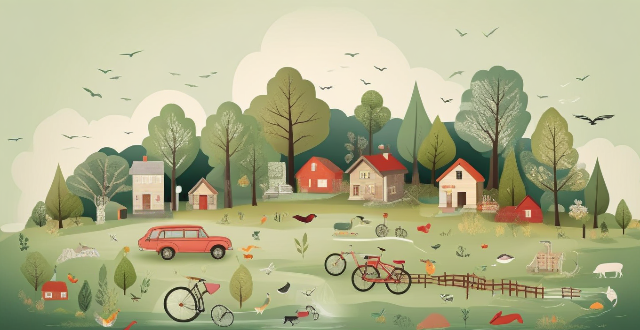Climate change has significant impacts on social justice, affecting marginalized communities, health outcomes, economic stability, migration patterns, and gender equality. Mitigation efforts to reduce greenhouse gas emissions and adaptation strategies to build resilience against the impacts of climate change are necessary to create a more equitable future for all.

The Impact of Climate Change on Social Justice
Climate change is a complex and multifaceted issue that affects every aspect of our lives. One of the most significant impacts of climate change is its effect on social justice. In this response, we will explore how climate change impacts social justice and what can be done to mitigate these effects.
1. Increased Vulnerability for Marginalized Communities
a. Low-Income Communities:
Low-income communities are often more vulnerable to the effects of climate change due to their limited resources and lack of access to adequate infrastructure. These communities may not have the financial means to adapt to changing weather patterns or to rebuild after natural disasters. This creates a cycle of poverty and inequality that is exacerbated by climate change.
b. Indigenous Peoples:
Indigenous peoples are particularly vulnerable to climate change as they often rely on natural resources for their livelihoods. Changes in temperature and precipitation patterns can disrupt traditional farming practices and hunting and gathering activities, leading to food insecurity and loss of cultural heritage.
c. Coastal Communities:
Coastal communities face unique challenges due to rising sea levels caused by climate change. These communities are at risk of flooding, erosion, and saltwater intrusion, which can lead to displacement and loss of property.
2. Health Disparities
a. Heat-Related Illnesses:
As temperatures rise, heat-related illnesses such as heat stroke and dehydration become more common, particularly among vulnerable populations such as children, the elderly, and those with pre-existing health conditions. These groups may not have access to air conditioning or other cooling technologies, making them more susceptible to heat-related illnesses.
b. Air Quality:
Climate change can also worsen air quality by increasing the frequency and intensity of wildfires, which release harmful pollutants into the air. This can have serious health implications for those living near affected areas, particularly those with respiratory conditions such as asthma.
c. Waterborne Diseases:
Changes in precipitation patterns can lead to an increase in waterborne diseases such as cholera and dysentery. This is because heavy rainfall can overwhelm sewage systems, leading to contamination of drinking water sources.
3. Economic Impacts
a. Loss of Jobs:
Climate change can lead to job losses in industries such as agriculture, fishing, and tourism, which are highly dependent on stable environmental conditions. This can have a significant impact on local economies and contribute to higher rates of unemployment and poverty.
b. Food Insecurity:
Changes in temperature and precipitation patterns can affect crop yields and livestock production, leading to food shortages and increased prices. This can disproportionately affect low-income households who spend a larger portion of their income on food.
c. Cost of Adaptation:
Adapting to climate change can be costly, particularly for developing countries that may not have the financial resources to invest in infrastructure upgrades or implement climate mitigation strategies. This can widen the gap between developed and developing countries and exacerbate existing inequalities.
4. Migration and Displacement
a. Environmental Refugees:
As climate change leads to sea level rise, extreme weather events, and other environmental disruptions, people may be forced to leave their homes and seek refuge elsewhere. This can create tensions between host communities and displaced individuals, as well as strain resources in receiving areas.
b. Urbanization:
Climate change can drive rural-to-urban migration as people seek better job opportunities and access to services in cities. This can lead to overcrowding, strained infrastructure, and increased competition for resources in urban areas.
5. Gender Inequality
a. Caregiving Responsibilities:
Women are often responsible for caregiving tasks such as collecting water and preparing food, which can be affected by climate change. For example, droughts can make it more difficult to find clean water sources, while changes in agricultural patterns can affect food availability and nutrition.
b. Vulnerability to Violence:
Climate change can increase women's vulnerability to violence as they may be forced to travel longer distances to collect resources or engage in survival sex in exchange for food or shelter. Additionally, displacement due to climate change can lead to family separation and increased risk of gender-based violence.
Conclusion
Climate change has far-reaching implications for social justice, affecting marginalized communities, health outcomes, economic stability, migration patterns, and gender equality. Addressing these challenges requires a comprehensive approach that includes both mitigation efforts to reduce greenhouse gas emissions and adaptation strategies to build resilience against the impacts of climate change. By working together to address climate change, we can create a more equitable future for all.